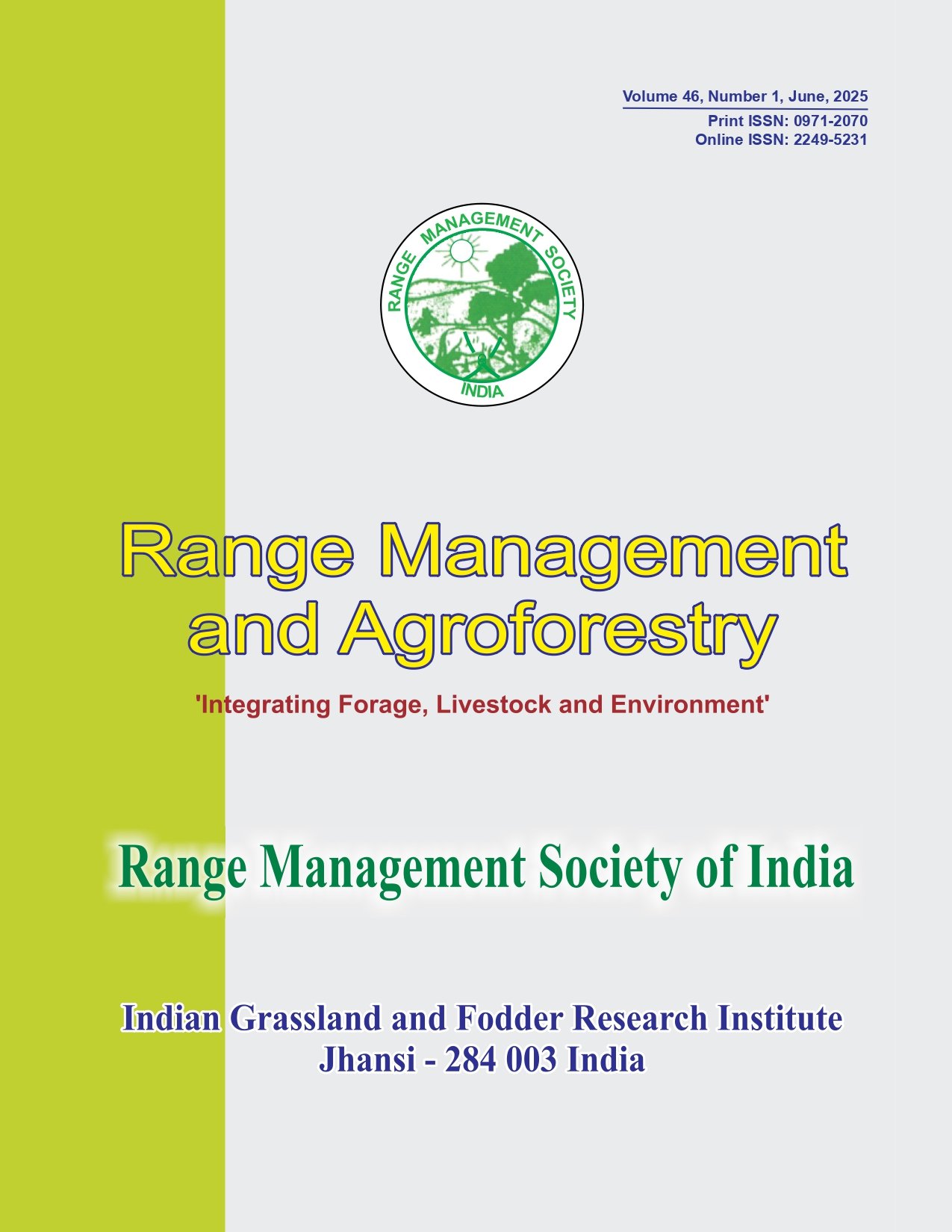Variation in floral diversity of eight agro-ecosystems along elevational gradient in northwestern Himalaya
Keywords:
Agroforestry, Altitudinal variation, Floral density, Grassland ecosystemAbstract
The present study was conducted at two different altitudes having eight common land use/agro-ecosystems to analyze the difference in distribution pattern and diversity of existing flora by laying down plots and quadrates. A plot of 0.1 ha was laid down in all the land use systems for measuring the density and diversity of trees and within those plots, one sub plot of size 10 m × 10 m for shrubs and 1 m × 1 m for herb layer. The density and basal area of herbaceous flora was highest in agrihortisilviculture at lower elevation and silvopastoral at higher elevation. Herbage density and basal area showed a decreasing trend with increasing altitudinal range. The maximum shrub density reported under forestland uses both the altitudinal ranges. Irrespective of the land use system, shrub density enhanced with increasing altitudinal range. At higher altitudinal range, tree density (individuals ha-1) was highest under forest (550) land use followed by agrisilviculture (390), agrihortisilviculture (260), horticulture (230), silvopastoral (230) and agrihorticulture (16) systems, respectively. Shannon Weiner index (H’) (2.27) was observed highest for forestland use. Among agroforestry systems, agrihortisilviculture land use system showed best results with respect to density and grassland displayed least. Hence, the study recommends the introduction of more and more forest tree species in and around the orchards and other agriculture landscapes of the region to enhance and safe guard the plant richness.




